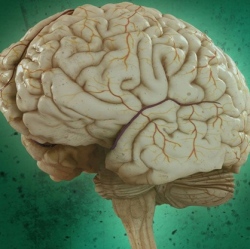
Alzheimer’s is the sixth-leading cause of death in the US, but a scientist is reporting a breakthrough that could lead to promising treatment. Robert Nichols, professor of molecular biology, discovered that a small chunk from the same compound known to trigger Alzheimer’s can protect nerve cells in the brain from the disease.
It began in 2014 and funding comes from UH Foundation and National Institutes of Health grants. Nichols is now working with scientists at the University of Arizona to see if the discovery can translate into a future pharmaceutical.
“A big part of the future will be coming up with this stable, active form of this fragment that can get into the brain and have its activity in the brain so it’s not just active in the test tube,” Nichols said.
Although there are treatments for symptoms of Alzheimer’s disease, it is the only cause of death among the top 10 that cannot be prevented, cured or even slowed, according to the Alzheimer’s Association, a national nonprofit organization.
High levels of beta amyloid, a sticky protein that clumps together, is known to trigger Alzheimer’s disease and cause nerve cells in certain parts of the brain to die, which leads to increased memory loss and confusion.
Nichols and his team at UH discovered that applying a smaller, nontoxic fragment from a larger beta amyloid compound in the brain can protect nerve cells and restore memory processing.
If this could be developed into a drug treatment, then it could have a significant impact on those suffering from the disease.
“It not only alleviates symptoms from what we’ve seen, but can also stop the disease and potentially even reverse any detrimental effects that have already happened,” said Kelly Forest, a postdoctoral fellow at the UH medical school.
